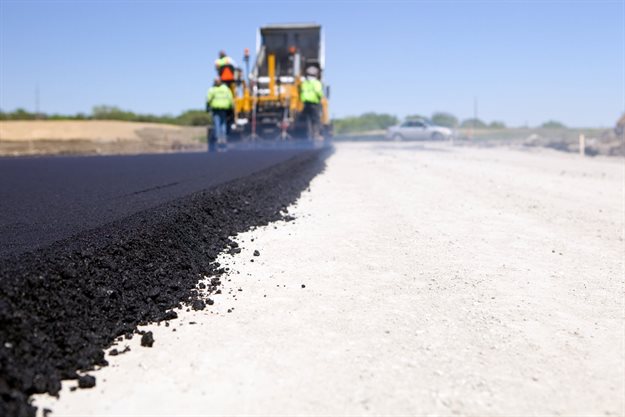CSIR partnership results in high quality asphalt road
The Council for Scientific and Industrial Research's efforts to provide alternative products and knowledge routes for the asphalt pavement industry are paying off. The intention has been to open up the industry and enable the inclusion of more players and eventually engineer economical and better performing roads.

Image source: Gallo/Getty
The CSIR has been focusing on locally available alternative additives, which would be much cheaper than the conventionally imported additives. Further, this would encourage the sustainable use of recycled materials, which have an economical benefit for the industry, while resolving an environmental challenge for the country.
Using locally available micro-fillers and sustainably using recycled tyres, the CSIR and Much Asphalt have now successfully constructed a road section.
Paved controlled trial section
After just over a year’s worth of combined laboratory development and evaluation efforts between CSIR Smart Mobility and the Much Asphalt Gauteng Regional Laboratory, the project came to fruition when both products under development were produced and paved into a controlled trial section in Roodepoort, Gauteng.
The 200m-long trial section included a 60mm modified enrobés à module élevé (EME) base layer and a 40mm modified bitumen rubber surfacing layer, which was constructed over a cleaned gravel base layer treated with an SS60 tack coat prior to paving.
The location of the trial section - starting from the weighbridge of the Much Asphalt Roodepoort branch to the public road tie-in on the approach to the site - was selected specifically to allow ease of continual performance measurement, while having up-to-date details on the type and amount of traffic that moves across the section.
Performance characteristics evaluated
“During both the development and trial phase, several performance characteristics were evaluated as predictors of in-situ performance, which served as the baseline for the in-situ performance evaluation, which were set to run on a three-monthly basis for at least the first year after construction,” said Georges Mturi, senior researcher and manager of CSIR's Advanced Material Testing Laboratories.
“The evaluations and visual inspections have shown that after nine months of traffic and environmental exposure, the layers are performing as expected,” Mturi said.
To date, no edge breaking is present where heavy vehicles are moving onto and off of the surfacing, and no permanent deformation is present on the surfacing, with particular focus at stopping locations or where vehicle turning takes place.
There are no signs of any deflection or temperature-induced crack formation taking place.
Providing long-lasting pavements
“The developed and trialled technologies, aimed at improving the performance properties of standard 10/20 based EME, as well as having a viable replacement product for standard styrene-butadiene-styrene (SBS) modified A-E2 binder, without detracting from pavement performance are deemed effective, and that can assist industry practitioners in the endeavour to provide long-lasting pavements to society,” said Joanne Muller, Much Asphalt regional laboratory manager.
For bitumen users, asphalt manufacturers or any other intermediary bitumen suppliers, it will act as an easier means of correcting poor bitumen to pass performance specifications or improving the performance of standard bitumen from one grade to another, in the event of national bitumen shortages.
It is also important to highlight that the major benefit of this invention for the country would be an increase in the recycling of waste tyres in the road industry for the beneficial outcome of better-performing roads.